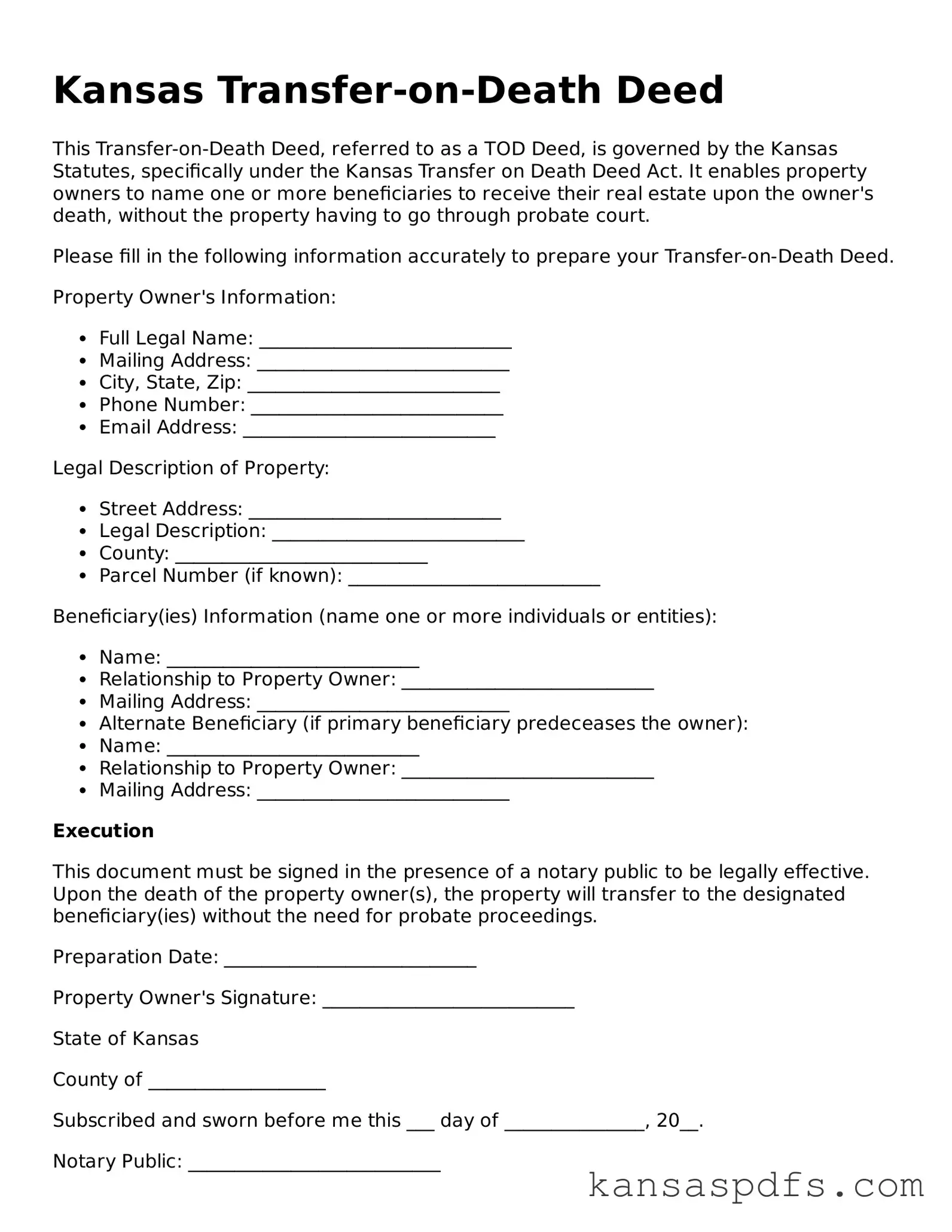Kansas Transfer-on-Death Deed
This Transfer-on-Death Deed, referred to as a TOD Deed, is governed by the Kansas Statutes, specifically under the Kansas Transfer on Death Deed Act. It enables property owners to name one or more beneficiaries to receive their real estate upon the owner's death, without the property having to go through probate court.
Please fill in the following information accurately to prepare your Transfer-on-Death Deed.
Property Owner's Information:
- Full Legal Name: ___________________________
- Mailing Address: ___________________________
- City, State, Zip: ___________________________
- Phone Number: ___________________________
- Email Address: ___________________________
Legal Description of Property:
- Street Address: ___________________________
- Legal Description: ___________________________
- County: ___________________________
- Parcel Number (if known): ___________________________
Beneficiary(ies) Information (name one or more individuals or entities):
- Name: ___________________________
- Relationship to Property Owner: ___________________________
- Mailing Address: ___________________________
- Alternate Beneficiary (if primary beneficiary predeceases the owner):
- Name: ___________________________
- Relationship to Property Owner: ___________________________
- Mailing Address: ___________________________
Execution
This document must be signed in the presence of a notary public to be legally effective. Upon the death of the property owner(s), the property will transfer to the designated beneficiary(ies) without the need for probate proceedings.
Preparation Date: ___________________________
Property Owner's Signature: ___________________________
State of Kansas
County of ___________________
Subscribed and sworn before me this ___ day of _______________, 20__.
Notary Public: ___________________________
My commission expires: ___________________
